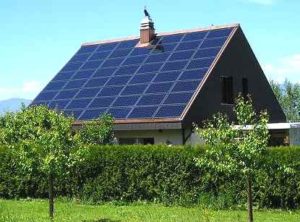 There are lots of web sites available who are trying to sell you a solar panel power system. they talk about how easy it is and how they solve all of the problems for you so that really all you have to do is sign on the dotted line and suddenly you are committed to a 20 year contract! This web site is trying to get the facts from the consumers perspective and assess what the real Solar Power Business Model and business case is for the consumer.
There are lots of web sites available who are trying to sell you a solar panel power system. they talk about how easy it is and how they solve all of the problems for you so that really all you have to do is sign on the dotted line and suddenly you are committed to a 20 year contract! This web site is trying to get the facts from the consumers perspective and assess what the real Solar Power Business Model and business case is for the consumer.
This post is going to describe some of the factors that should be part of your business model as a consumer considering the installation of a solar panel power system. As we mentioned we are looking for a financial model that consumers can use to evaluate whether it makes sense or not to install a solar panel system purely from a financial perspective. We are going to ignore the noble and emotional areas such as supporting the planet and green energy in this particular post. These attributes are important, but when it comes down to money, consumers want to know what is in it for them, what is it going to cost and what wil the benefits be?
Solar Power Business Model – Inputs
So what variables or financial revenue and cost measures should be included in a financial model that a consumer can use? Here is our starting list. Send us comments if you have others that we should be considering.
- Revenue or power consumption reduction estimates
- Potential grants available, how much, how long
- Charges if any to complete initial survey estimate of potential power production
- Equipment costs from estimate
- Charges for installation
- Charges for completion of application for grants
- Roof repairs, roof replacement etc to support solar panels – initial installation
- Roof replacement costs to remove and re-install panels later in life of contract
- Application costs to attach to Grid
- Financing costs, interest rates, term of loan, payments
- Legal fees to evaluate contracts
- Additional home insurance or special riders
- Solar income insurance
- Ongoing maintenance for your system
- Equipment failures and repair costs
- Cash flow analysis
- Payback analysis
Sensitivity Analysis
Once you have information concerning all of the variables you can begin to build a spreadsheet model to evaluate your cash flow. This will serve as the base line model for your evaluation and decision to proceed or not with a solar panel installation. You may even use this model to help you gain financing for the installation and initial maintenance. However we strongly urge you to develop sensitivity analysis to evaluate the risks associated with your project. Remember many contracts that are being offered have a 20 year life span. Which is a very long time in this business and many things can change for the better as well we as for the negative.
At the minimum, all costs should be increased by 20%. All revenue should be lowered by 20% to determine what the worst case scenario is for your situation. In some cases you might even make it a larger percentage deviation to ensure that you can deal with the worst case situation. For example if in the area in which you live, you typically get 300 days of sunshine on average. You might lower that by 30% or to 210 days to reflect a really bad year with lot’s of cloud. If you can still handle the reduced income and negative cash flow should this worst case scenario occur, then there will be no surprises for you financially which you cannot deal with.
Sensitivity factors to consider
Besides varying all revenue by minus 20% and all costs by plus 20%:
- Premature roof replacement
- Sale of your home
- Solar company goes bankrupt
- Grants end unexpectedly
- Solar panels have premature failures
- Tariff rate guarantees spiral downwards
As we do more research in this area we will update our list of factors to take into account. We are still looking for a consumer oriented business model that we could post to our site. However most companies want to provide you with a quote first. Which means you must work from their models etc. Personally I would rather take their numbers and plug them into a business model that I can manipulate and complete sensitivity analysis on my own.
Readers, if you are aware of one, please share a solar panel power generation business model with us!
For more posts about solar power business models, click here.